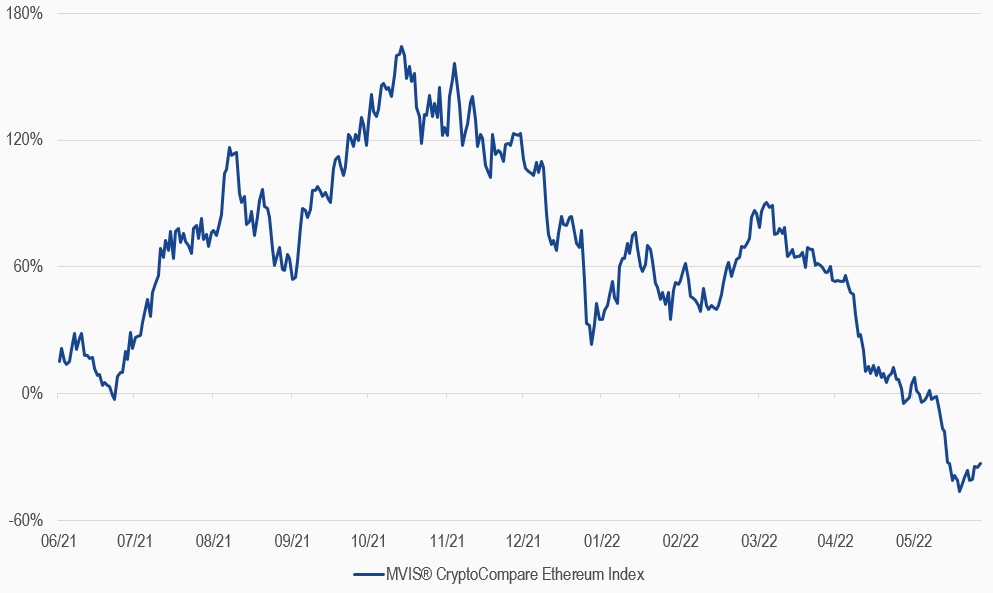“The Merge”, expected in the second half of 2022, is a highly anticipated event where the Ethereum network will switch from a proof-of-work (PoW) security model to proof-of-stake (PoS). None of the transaction data executed on the Ethereum network since its inception will be lost as a result of the merge. Validators in Ethereum’s PoS Beacon chain are required to stake ETH as collateral in order to propose new blocks in the chain. Malicious validators that don’t play by the rules risk having their collateral “slashed”, or taken offline. The amount at stake is what ensures a PoS network’s economic security, as opposed to power-guzzling computations in a PoW system.
Nevertheless, when it comes to the merge, there are a lot of misconceptions about what it really is. We go through the three great misunderstandings and hope to shed some light on this complex topic.
Misconceptions:
- You can withdraw your staked ETH after the merge: The merge is basically the transition to PoS. The next upgrade after the merge, called Shanghai hard fork, will offer the possibility, to withdraw your ETH. This can be months away. There will also be an exit queue for stakers after the hard fork. So in general, this is another factor reducing supply for Ethereum.
- The merge will lower transaction fees: Proof-of-stake doesn't change the throughput of the chain. The Merge is simply a change to Ethereum’s consensus mechanism and will not directly impact gas fees. Ethereum’s strategy to lower transaction fees are roll-ups. A rollup is a scaling solution and takes multiple Ethereum transactions and rolls them up into a single piece of data before submitting them all to the blockchain
- You can't run a node an Ethereum without staking 32 ETH: There's two types of nodes on the network. There are validators, which are nodes that produce blocks. To run one of those you do need to put 32 ETH as a stake on the beacon chain. Instead, If you just want to run a node on the network, everybody can do that with a basic understanding of the blockchain. Running your own node enables you verifying that the blocks and transactions that these validators create are valid.
The merge is a pretty complex and risky project. No other blockchain of Ethereum’s scale has ever overhauled its consensus protocol in the history of crypto. But there are also compelling advantages. PoS proponents argue that the merge will make Ethereum more scalable, decentralized, sustainable, and efficient.
MVIS® CryptoCompare Ethereum Index
26/06/2021-26/06/2022

Source: MarketVector Indexes. All values are rebased to 100. Data as of June 26, 2022.
Get the latest news & insights from MarketVector
Get the newsletterRelated:
About the Author:
Martin Leinweber is an expert in fundamental and quantitative trading strategies. He sees cryptoassets as a fundamental building block for investors to achieve their return targets in a low interest rate environment. He works as a Digital Asset Product Strategist at MarketVector Indexes providing thought leadership in an emerging asset class. His role encompasses product development, research and the communication with the client base of MarketVector Indexes. Prior to joining MarketVector Indexes, he worked as a portfolio manager for equities, fixed income and alternative investments for almost two decades. He was responsible for the management of active funds for institutional investors such as insurance companies, pension funds and sovereign wealth funds at the leading German quantitative asset manager Quoniam. Previously, he held various positions at one of Germany's largest asset managers, MEAG, the asset manager of Munich Re and ERGO. Among other things, he contributed his expertise and international experience to the establishment of a joint venture with the largest Chinese insurance company PICC in Shanghai and Bejing. Martin Leinweber is co-author of „Asset-Allokation mit Kryptoassets. Das Handbuch“ (Wiley Finance, 2021). It’s the first handbook about integrating digital assets into traditional portfolios. He has a Master in Economics from the University of Hohenheim and is a CFA Charterholder.
For informational and advertising purposes only. The views and opinions expressed are those of the authors but not necessarily those of MarketVector Indexes GmbH. Opinions are current as of the publication date and are subject to change with market conditions. Certain statements contained herein may constitute projections, forecasts and other forward looking statements, which do not reflect actual results. It is not possible to invest directly in an index. Exposure to an asset class represented by an index is available through investable instruments based on that index. MarketVector Indexes GmbH does not sponsor, endorse, sell, promote or manage any investment fund or other investment vehicle that is offered by third parties and that seeks to provide an investment return based on the performance of any index. Inclusion of a security within an index is not a recommendation by MarketVector Indexes GmbH to buy, sell, or hold such security, nor is it considered to be investment advice.




